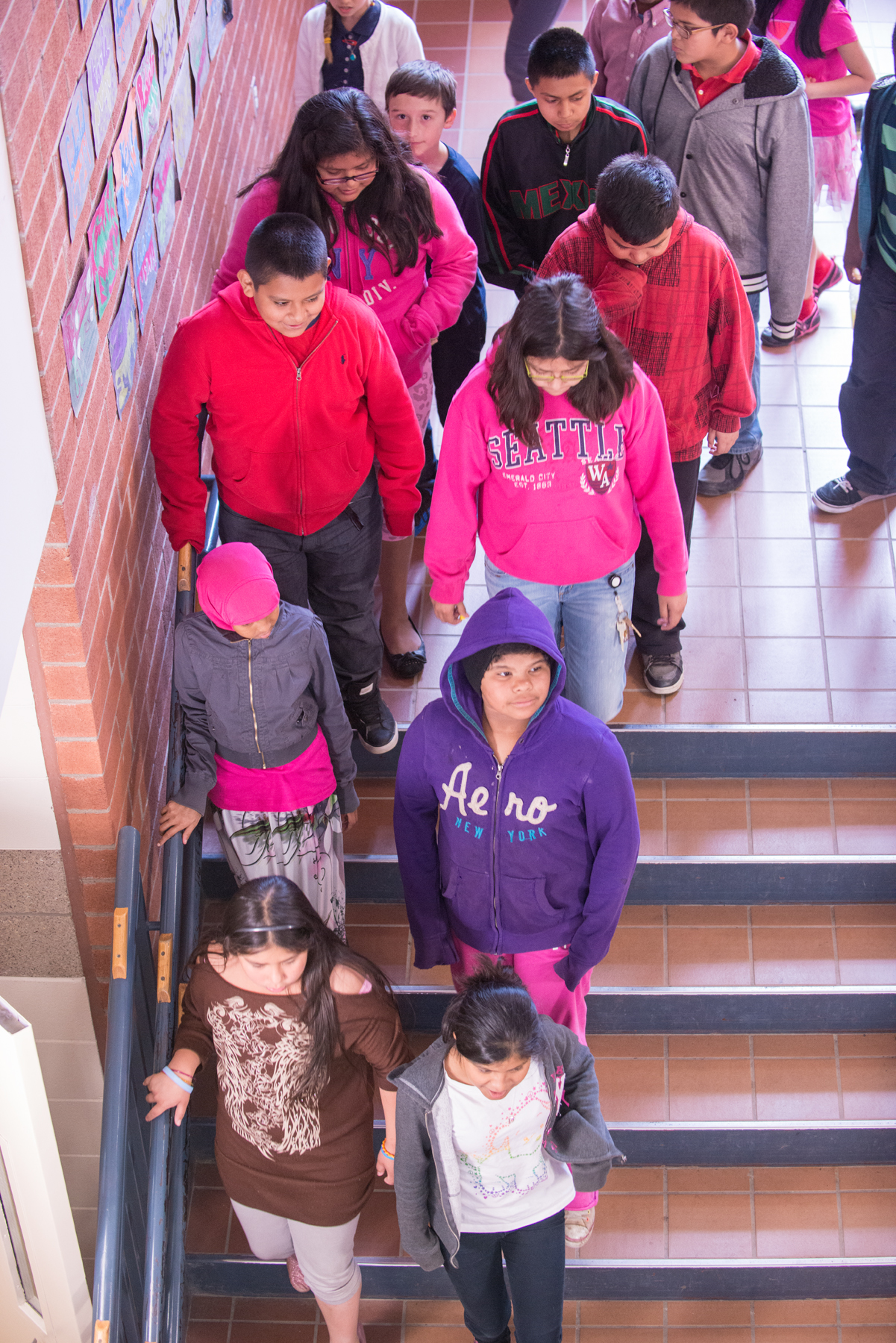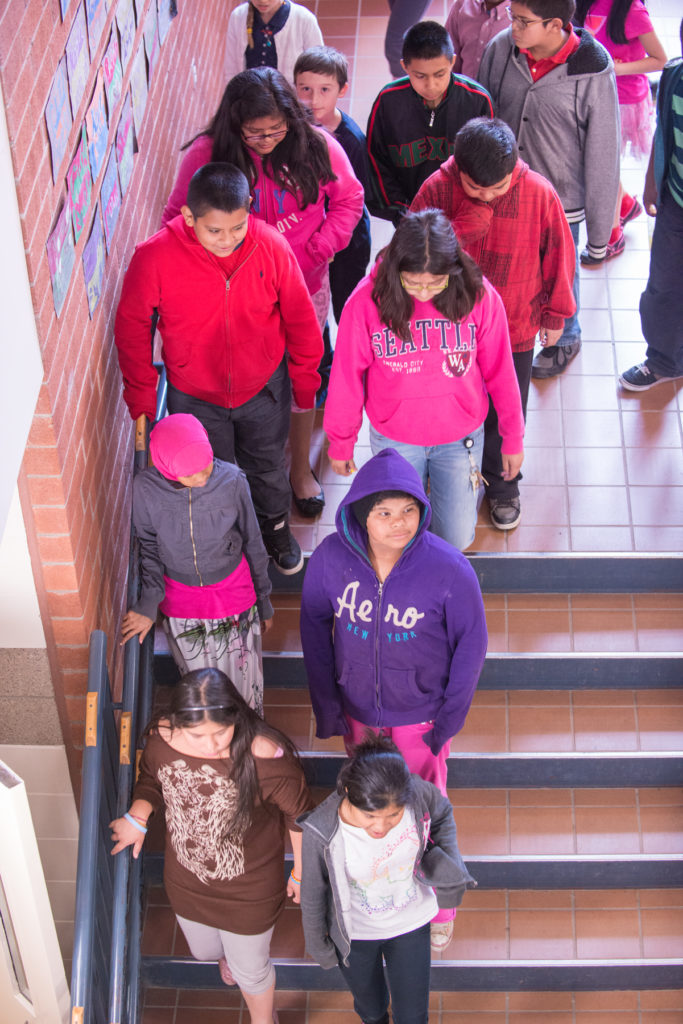Changing a School Climate: How Responsive Classroom Helped

 A little over a year ago, I became the principal at a school where discipline referrals and staff stress were at all-time highs. Change was clearly needed, and soon. I’d spent the previous eight years leading another school into becoming a safe, joyful learning community, thanks mainly to our use of the Responsive Classroom approach to teaching. Now I was convinced that to turn things around at my new school—to transform it into a community with a positive learning climate and high student achievement—I’d need to lead the staff to embrace this way of teaching, thinking about, and being with students. The question was how to introduce the change and move it forward quickly without overwhelming everyone.
A little over a year ago, I became the principal at a school where discipline referrals and staff stress were at all-time highs. Change was clearly needed, and soon. I’d spent the previous eight years leading another school into becoming a safe, joyful learning community, thanks mainly to our use of the Responsive Classroom approach to teaching. Now I was convinced that to turn things around at my new school—to transform it into a community with a positive learning climate and high student achievement—I’d need to lead the staff to embrace this way of teaching, thinking about, and being with students. The question was how to introduce the change and move it forward quickly without overwhelming everyone.
I settled on a strategy of getting a consensus on the problem, gradually introducing key Responsive Classroom practices, and fostering strong communications with the school’s adults. Here’s how it worked.
Defining the Problem
To get to know the staff better and find out what they thought needed to change at the school, I posted daily messages that included interactive questions for them to answer, and I conducted one-on-one interviews with each of them.
I also asked everyone to fill out a survey that asked about life at the school and any current concerns. One question asked, “If you were the principal, where would you concentrate your efforts in the first 100 days?”
Not surprisingly, most respondents named school climate as an area of concern. Many also let me know that they wanted structure, strong leadership, a voice in change, and an opportunity to exercise teacher leadership. These responses helped set the stage for introducing new strategies and perspectives.
Taking Small Steps Toward Change
To get staff started on our new way of doing things, I formed a core leadership team of twenty-one teachers from all grade levels. I decided to use the book Responsive School Discipline: Essentials for Elementary School Leaders. Every time our core leadership team met, we debriefed around a chapter of the book. This was the cornerstone to examining current practice and envisioning change in our school.
Along with our book study, I began introducing the leadership team to four Responsive Classroom practices I believed would give them a real feeling for the approach and entice them and their colleagues to begin using it in their classrooms:
A Common Signal. During discussions with the leadership team, I realized that teachers had several different methods (such as raising their voices or clapping their hands) for getting students’ quiet attention in the classrooms. Knowing that having a shared, schoolwide signal was critical in a school of over 900 students, I introduced the idea of having everyone use a soft chime. I bought one for each classroom and, one after another, teachers began teaching students what to do when they heard the sound (stop what they were doing, become quiet, and look at the teacher).
At the same time, I introduced a simple raised-hand signal for use at whole-school gatherings. Students responded well to the signals, which meant more learning time for students and fewer frazzled nerves for teachers.
Interactive Learning Structures. To make our bi-monthly leadership meetings more engaging and enjoyable, I introduced a few of these easy ways of getting participants up, moving, and learning with each other. One favorite was a simple around-the-circle sharing of ideas in response to a question we were thinking about. Another was “Give One, Get One,” in which teachers briefly exchanged key learnings or ideas with as many colleagues as possible while mingling for a minute or two. Over time, teachers began using these types of interactive structures with students, which made the children’s learning more active and engaging.
Morning Meeting. During each leadership meeting, we held an adult version of this core Responsive Classroom practice, which is used to build community and give students practice with key academic and social skills. With staff, I used Morning Meeting to create a joyful climate for adult learning. We got to know and laugh with each other and quickly realized that the human need for belonging, significance, and fun is as fundamental for adults as it is for children.
Of course, my ultimate goal was for teachers to hold Morning Meeting with their students. So after letting the leadership team experience the positive effects of this meeting format themselves, I offered to run demonstration Morning Meetings in classrooms. The children loved the meetings, and teachers saw firsthand the power of starting the day with this twenty- to thirty-minute daily routine. Furthermore, my direct involvement with Morning Meeting gave it credence, and my risk-taking helped teachers feel more able to try something new themselves. It was also a great way for me to interact positively with students!
Positive Language. In all my interactions with staff and students, I modeled careful use of language to reinforce new learning or remind everyone how we’d agreed to interact with each other. For example, I de-escalated a situation with a student by saying in a neutral tone, “I know you’re angry right now, and I want to understand why. Take some time to cool off and then we’ll talk.” His teacher, who was watching, debriefed with me afterward. “You talked to him differently than I do, and even how you sat with him, knee to knee, it made a difference in the way he reacted. I need to learn how to do that.”
Over spring break, I created a teacher language bulletin board with examples of reminding, reinforcing, and also redirecting language (for use when a student begins to lose self-control). I also made small language cards that fit inside our badge sleeves so teachers could have a quick reference with them at all times. And I used the resources on the Responsive Classroom website to provide articles that explained the power of the language we used with each other and with students.
Keep Communicating
Regular and rich communication with staff was an important part of my strategy during that whole first year. I continued to write a daily morning message for teachers, which I posted next to the mailboxes and copy machine. These messages told teachers what was new, asked key questions, or put forth a challenge.
I also wrote a weekly newsletter for staff. Many issues included a short article about the Responsive Classroom approach and updates on new things teachers were trying.
And I wasn’t the only one communicating: Staff responded to my encouragement to communicate with each other about what they were learning and trying in their classrooms. Some staff members even began exchanging ideas with colleagues in other schools through the Responsive Classroom Twitter feed.
Positive Results
By the end of the year, much had changed for the better. Teachers had a clearer picture of what was possible and were enthusiastic about the changes that were happening. I had asked for all staff members to take a four-day Responsive Classroom training by the end of the following school year. Instead, almost 100% of them did it that immediate summer. All of us have grown together as a learning community, and we face the future united, celebrating our successes, and ready for whatever challenges might lie ahead.
